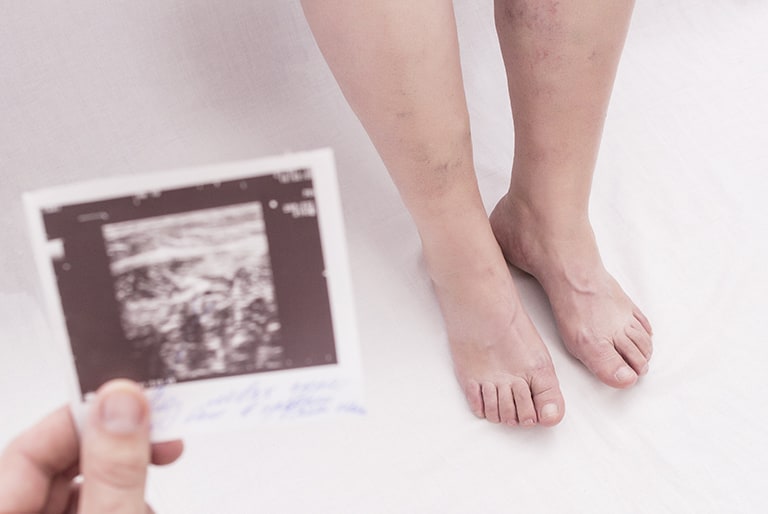How dangerous are varicose veins?
Harmless or dangerous? Varicose veins are very widespread in the population and are primarily regarded as a beauty flaw. But the protruding, tortuous lines on your legs hide a real health risk!

How dangerous are varicose veins really?
Quite often varices are purely a cosmetic problem. However, the increased build-up of blood in your legs from varicose veins leads to an increased risk of the formation of blood clots. Deep vein thrombosis can even be life-threatening if the clot is transported through the blood circulation to your lung and there causes pulmonary embolism.
Since the walls of your veins are less elastic with varicose veins than they are with healthy veins, and can even be permeable, there is also the danger of bleeding and vein inflammation. In the advanced stage, varicose veins lead to ulcers, poorly-healing wounds and open legs (Ulcus cruris), which in turn bring an increased risk of infection and are a considerable strain for people who are afflicted.
While varicose veins hardly cause symptoms in the early stage, the consequences can cause severe damage to your health. Quite often a life-long therapy is required, with compression stockings and medicines, which can be prevented with an early diagnosis.
By the way, the thickness and the form of a varicose vein is not an indication of an increased health risk. Sometimes it is the not-so-visible varices which are only detected late on and therefore can be dangerous.
When should you go to the doctor with varicose veins?
Basically, varicose veins should always be examined by a doctor because only a phlebologist can provide an accurate diagnosis. In many cases, the unsightly varices are completely harmless and are simply a beauty flaw for the afflicted, one which can be removed by different methods.
But sometimes a serious venous disease is the root of the visible tortuous lines. A vein specialist can recognise early a possible risk of thrombosis and take countermeasures with an appropriate therapy
It is an emergency if one leg suddenly swells up, feels warm to the touch and is painful. Thrombosis could be the cause – and that must receive immediate medical attention as it can lead to pulmonary embolism. Reddened, painful veins indicate vein inflammation, which also needs to be treated.
What symptoms can varicose veins cause?
In many cases, varicose veins do not cause any symptoms at the beginning or only light ones. Over time, however, really unpleasant or even painful symptoms can appear.
- Heavy legs
- Swollen legs
- Pain in the legs
- Water in the legs
- Brownish discolouration of the skin
- Itchy legs
- Nightly calf cramps
Many people know these early indications of venous insufficiency without taking the warning signs seriously. But anyone who regularly comes home in the evening with swollen legs or discovers spider veins on their legs should have a vein check at their doctor’s in order to get early treatment for vein problems. The reddish-bluish webs are generally harmless, but can develop into varicose veins and you should definitely keep an eye on them.
What can I do against varicose veins?
Best is to strengthen your veins early enough in order to prevent varicose veins from forming in the first place. Lots of movement instead of prolonged sitting or standing, regular sport, a healthy diet and sufficient intake of liquids foster good health. Contrast showers and Kneipp baths additionally keep your veins elastic due to the change between cold and warm.
If your varicose veins visibly protrude more, then usually only a medical operation can help. The following procedures offer a promise of success, depending on the type, form and location of the varices
Unfortunately, varices can always come back. That is why it is also important after the removal of varicose veins to strengthen your veins and to prevent them from developing again. It can also be sensible to wear compression stockings to support the function of your veins.